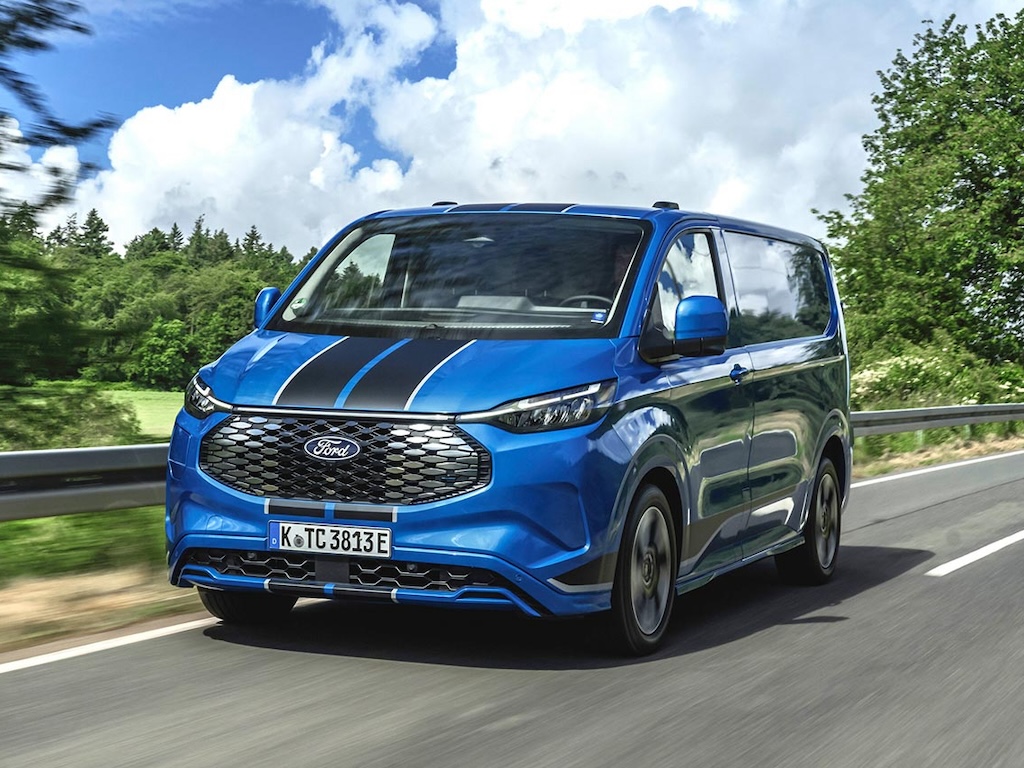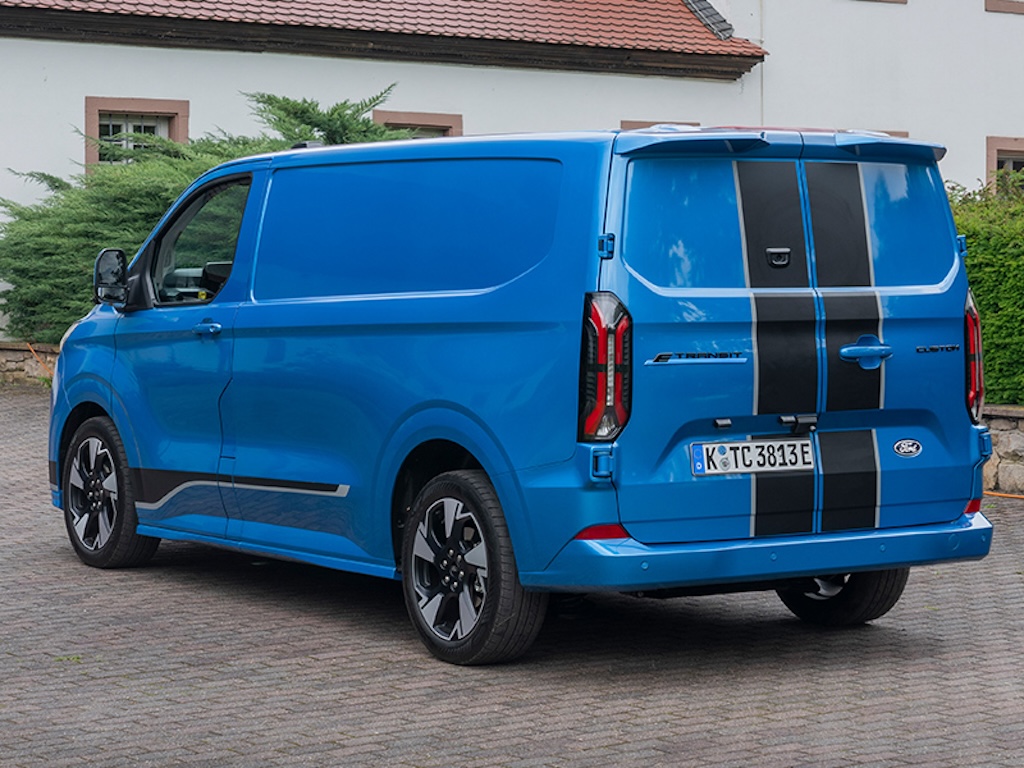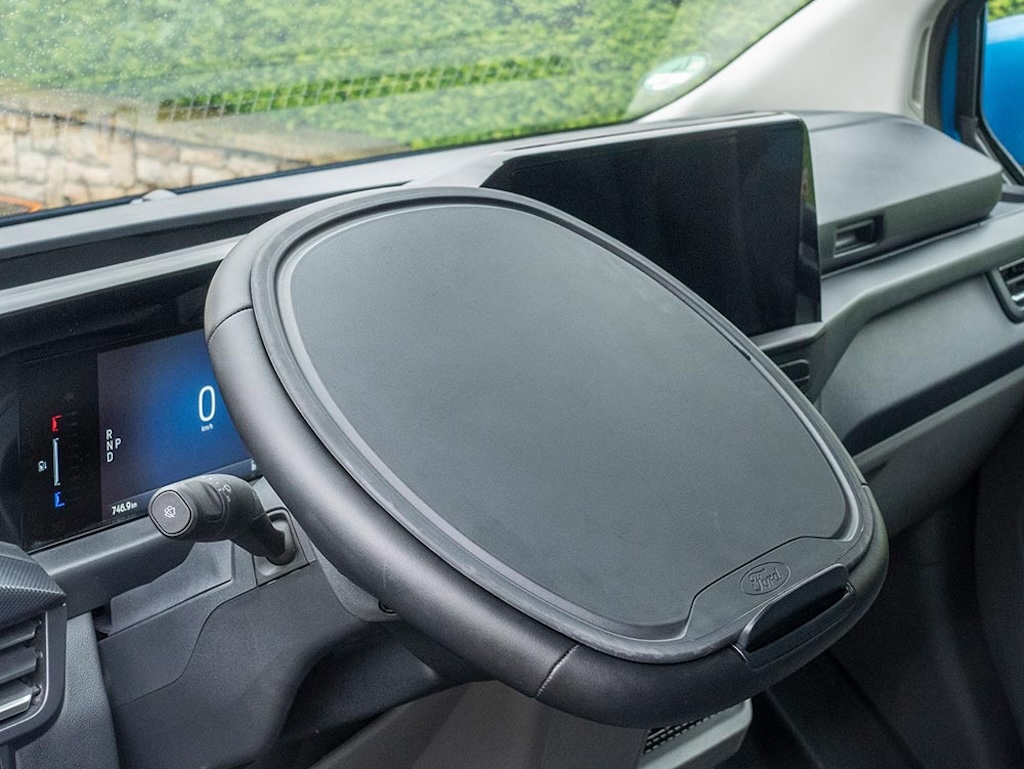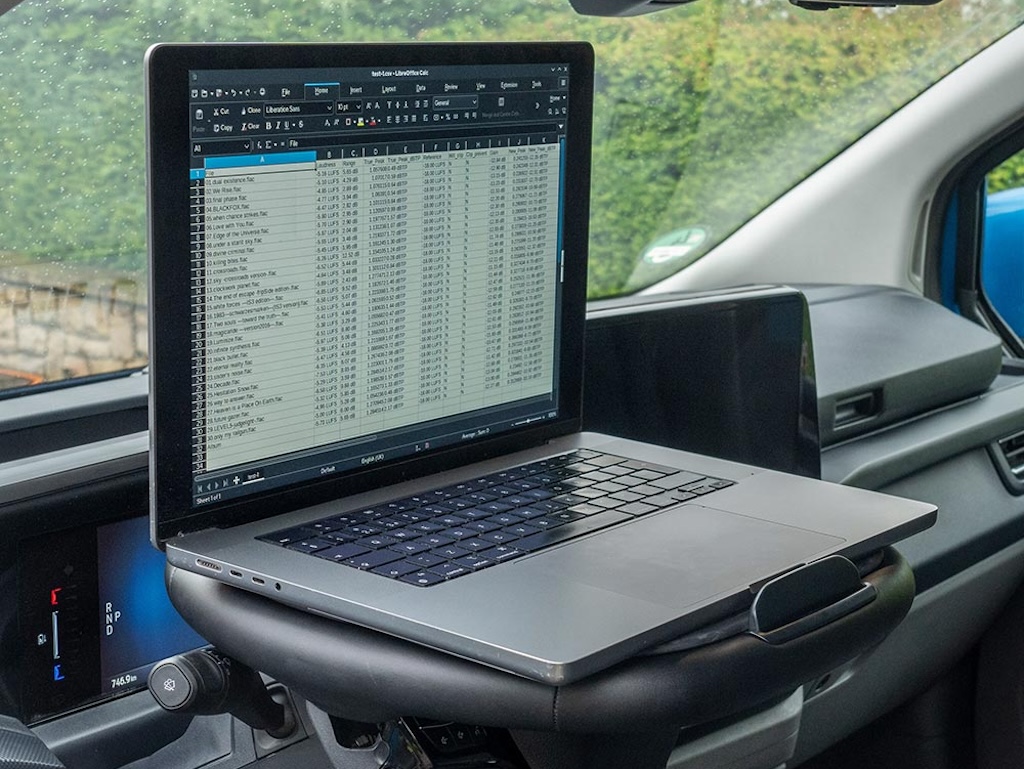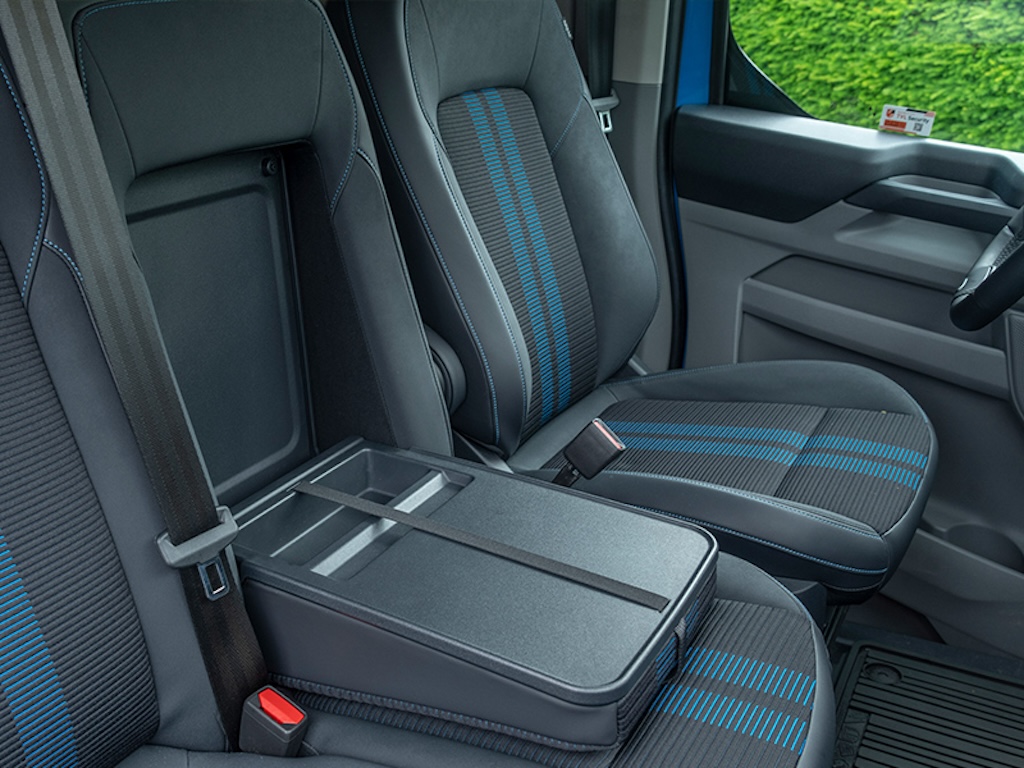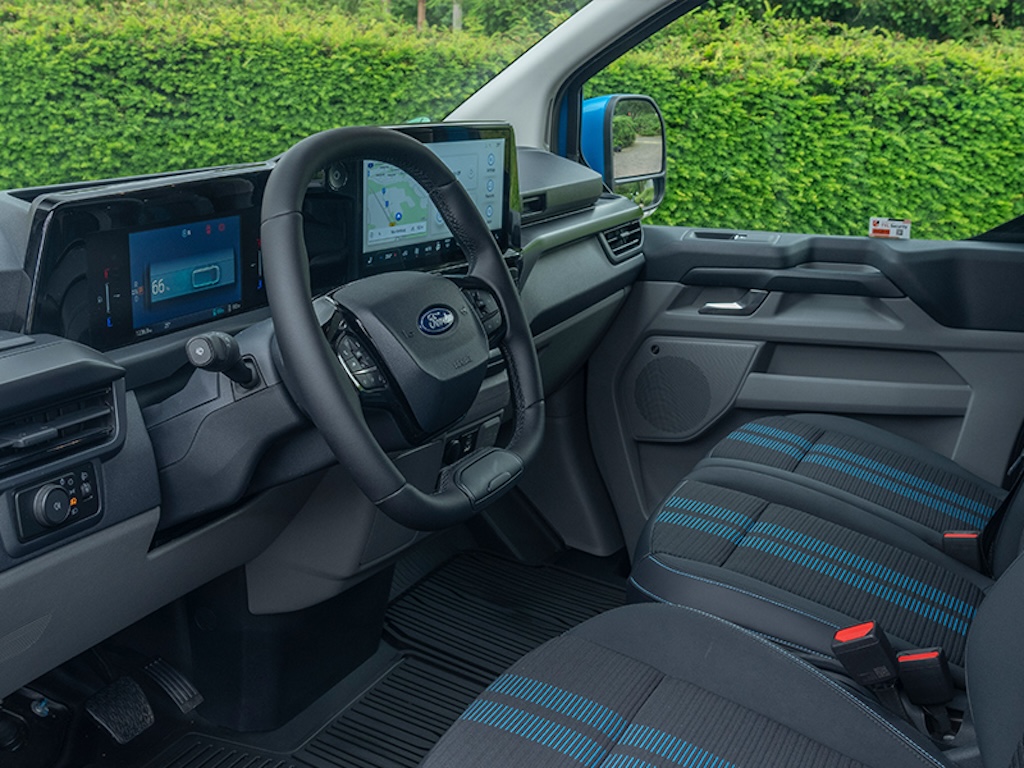Almost everyone seems to love a Transit Custom – and, in the UK, it finds more homes than any other van on the market. But will a battery-powered version be as popular? George Barrow finds out.
It’s been 70 years since the electric toothbrush was first mass-marketed and, on the whole, people tend to think they’re a pretty good idea. It does the same job as a regular toothbrush – arguably even better – and it’s probably more suited to our increasingly sugary diets. But, crucially, people still have the choice to not have an electric toothbrush if they want. The Ford E-Transit Custom is like an electric toothbrush. It will do the same job, within reason, as a regular Transit Custom. It may even do it better (or cheaper) – but it is, in many ways, an upgrade.
Since the regular Transit Custom was introduced in 2012, it has taken the van world by storm. The Transit was already the best-selling name, but by splitting the large and medium vans in half by suffixing it with Custom Ford really defined the medium product and established its undeniable dominance.
As we push towards decarbonisation, an electrified version of that van becomes a crucial piece in the puzzle – an electric version of the van that literally everyone is buying. I say everyone because, in 2022 and 2023, the Transit Custom was not only the best-selling van, it was the best-selling vehicle in the country. That’s quite an achievement, so if anyone is going to crack electrification in the light van segment it’s likely to be Ford with the Custom. Furthermore, for those doubters, Ford has even hedged its bets with a second-generation of the Custom PHEV – using the plug-in hybrid system from the Kuga passenger car.
Electrifying the Custom has meant adding an electric motor but, unlike its larger sibling, there’s now the choice of three motor power outputs. However, there’s just one battery size, with a 64kWh unit delivering a respectable range of 209 miles according to the WLTP official figures. That means the van should return around 170 miles, even with a full payload of up to 1,100kg.
Ford says the energy density of the battery has been increased by 12% compared with the E-Transit and, with the batteries now mounted directly to the body, engineers have managed to improve both durability and reduce weight. Other clever developments for what is a chassis designed from the ground-up to be electrified – rather than a retrofit solution like the E-Transit – is that the drive motor is connected directly to the vehicle’s rear floor. That layout removes the need for a dedicated subframe, reducing complexity and keeping the rear loading height to a minimum. For this reason, the van’s high-voltage components have also been moved from the top of the motor assembly to the rear. It also means that, unlike the diesel van, which is front-wheel-drive, the E-Transit Custom is rear-wheel-drive.
There’s 11kW AC three-phase onboard charging as standard, which enables the van to be fully recharged in 6.7 or 10 hours using a 7kW wall box on a single-phase domestic supply. Fast charging can be carried out at up to 125kW, taking the battery from 10% to 80% in just 39 minutes.
More visible changes to those carried out under the skin can be seen in the revamped grille design. A new futuristic chrome dot front grille replaces the diesel van’s slotted design.
Ford has a fantastic reputation for delivering engaging vans to drive – and the E-Transit Custom is absolutely no different. Added battery weight settles the van over rough surfaces and improves grip and stability in corners. It’s an upgrade over its diesel sibling, which is an impressive accomplishment – and if you want to drive like a hooligan the van also allows it. Likewise, if you’d like to sit back and calmly watch the world zip by, it manages that comfortably too. Regardless of your feelings towards electrification this van really is one for everyone.
There are, however, a few niggles – but it’s minor stuff and unrelated to the 970kg payload, which is bang on the money for others in this segment. Wind noise is at noticeable levels, but that’s really the only criticism as it wraps its way around the A-pillar and mirrors. It’s also only noticeable because of the extraordinary silence from the road and driveline and is, according to a Ford engineer, more apparent compared to the previous generation (despite smaller more aerodynamic mirrors) due to slightly thinner glass – a weight-saving feature introduced across the new range.
Entry-level models start with Trend – one up from the Leader spec you’ll find in the diesel van. The basic 100kW (134hp) motor also feels more than powerful enough, but there are further options with the 160kW (215hp) variant, an option on Limited or Sport being a big step up. Taking things to the next level is the 210kW (282hp) motor for the MS-RT – a ludicrously overpowered, but enjoyable, hellraiser capable of turning out an unofficial 0-62mph time of just seven seconds. All models get the same 415Nm of torque, which is why even the base model feels gutsy enough for a medium van.
Doubters will question the size of the battery and, at 64kWh, it is shy of both the 77kWh battery in the VW ID. Buzz and the 75kWh unit you’ll find in the Stellantis models such as the Vauxhall Vivaro Electric. The WLTP figures flatter the Ford, though the electric Vivaro’s 217-mile range is almost matched by the smaller Ford’s battery, which manages an official 209 miles. In the real world both figures are unrealistic, but the E-Transit Custom is capable of a decent return nonetheless with an average of 2.7kW per mile during our partly laden test drive.
Electrifying the Transit Custom has also made it handle even better. The diesel van is already one of the best, if not the best, in its sector but the low-slung weight of the batteries, instant torque and seamless power delivery make the van even more engaging and effortless to drive.
VERDICT
Ford has thought about what customers want and what electrification means to them. The result is an overall package that is an improvement over the already impressive diesel. It’s comfortably the best electric van on the market by quite a distance, at the moment.
IN BRIEF
WHAT IS IT? The electric version of Britain’s best-selling van
MODEL TESTED? Ford E-Transit Custom Trend 100kW
HOW MUCH? £43,380 (ex VAT)
RANGE? Up to 209 miles (WLTP combined)
LOAD VOLUME? 5.8m3 (L1H1)
GROSS PAYLOAD? 1,100kg
DRIVE? 134hp/415Nm rear-mounted motor, rear-wheel drive with 64kWh under-floor battery pack
CHARGING? 125kW onboard DC rapid charger
Key fleet model: Ford E-Transit Custom L1H1 100kW Trend
Pros: A complete all-round package the electric van sector has been crying out for
Cons: 64kWh battery pack may be too small for long-range/heavy applications
Seven-word summary: Britain’s bestseller, now brilliant battery electric van


